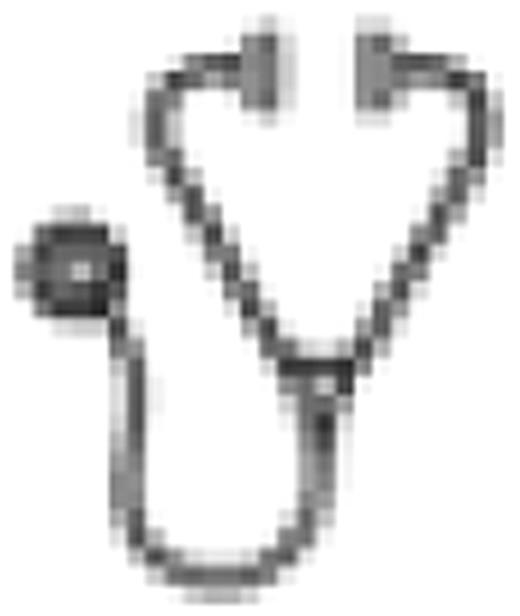Abstract
Poster Board I-787
Myelodysplastic syndromes (MDS) are clonal hematopoietic stem cell disorders characterized by ineffective hematopoiesis culminating in peripheral blood cytopenias and a propensity to Acute Myelogenous Leukemia (AML). The gold standard diagnostic test is the bone marrow aspirate and biopsy but clinicians are often hesitant to refer patients with unexplained cytopenias or macrocytosis for this test. Consequently undiagnosed patients are deprived access to effective treatments. Previously (Buckstein et al., Leukemia Research 33 (2009) 1313–1318) we identified factors which were independently predictive of diagnosing MDS at the time of bone marrow, including; age, mean corpuscular volume (MCV), red cell distribution (RDW), and lactate dehydrogenase (LDH). In this current study, we set out to validate our findings and determine the sensitivity and specificity of our scoring system for routine clinical practise.
We reviewed all bone marrow reports conducted at a tertiary care center for the years (January through December) 2006–2008 inclusive. Our inclusion criteria included bone marrows done for unexplained cytopenias and/or macrocytosis. We excluded all outside consultative referrals and bone marrows done for staging or remission assessment in patients with pre-existing or strongly suspected hemato-lymphoid diagnoses. In cases where the patient had more than one bone marrow, only the most recent marrow was used. The bone marrows were reviewed by two experienced hematopathologists, and the diagnosis of MDS was made using the WHO and/or FAB classification systems. Marrows were classified as ‘confirmed MDS’, ‘suspected MDS’ or ‘Not MDS’. Electronic patient charts were reviewed to determine the age, MCV, LDH and RDW at the time of diagnostic bone marrow. A factor was considered positive if the age was > 65 or if its value exceeded the upper range of normal for our laboratory standards (MCV > 96 fl, LDH > 250 IU/L, RDW >14.5%). All patients for whom we had 4 recorded factors were then assigned a score that ranged from 0 to 4. We determined the distribution of scores within this population, and the sensitivity and specificity of this scoring method in predicting a histopathological diagnosis of MDS.
Three-hundred and forty bone marrows met our inclusion criteria, and 289 (85%) had all four factors recorded at the time of diagnosis. The predictive ability of the MDS score is summarized in Table 1. The probability of diagnosing MDS increased from 8% with a score of 0 to 46% with a score of 3 or 4. A similar trend was seen when all 344 marrows were analysed. Our scoring system had high sensitivity (> 96%), when only one predictive factor was present and high specificity (96%) when 4 predictive factors were present at the time of diagnostic marrow. (Table 2)
In patients with unexplained cytopenias, or macrocytosis undergoing a diagnostic BM test, the pre-test probability of a MDS diagnosis increases as the number of predictive factors increases. The specificity of our MDS score also follows a similar trend. The sensitivity is high with only one positive factor indicating a lower score can be used as a screening tool. We have effectively validated a scoring system that may help clinicians decide on the utility of arranging diagnostic bone marrow examinations for patients with undiagnosed cytopenias and macrocytosis.
| Score . | Total Number of Patients with Positive Factors . | Probability of Confirmed MDS Diagnosis . | Probability of Suspected or Confirmed MDS Diagnosis . |
|---|---|---|---|
| 4 Factors Positive* | 14 | 43% | 50% |
| 3 or 4 Factors Positive* | 63 | 46% | 59% |
| 3 Factors Positive* | 77 | 45% | 57% |
| 2 Factors Positive* | 95 | 35% | 39% |
| 1 Factor Positive* | 80 | 19% | 26% |
| 0 Factors Positive* | 37 | 8% | 11% |
| Score . | Total Number of Patients with Positive Factors . | Probability of Confirmed MDS Diagnosis . | Probability of Suspected or Confirmed MDS Diagnosis . |
|---|---|---|---|
| 4 Factors Positive* | 14 | 43% | 50% |
| 3 or 4 Factors Positive* | 63 | 46% | 59% |
| 3 Factors Positive* | 77 | 45% | 57% |
| 2 Factors Positive* | 95 | 35% | 39% |
| 1 Factor Positive* | 80 | 19% | 26% |
| 0 Factors Positive* | 37 | 8% | 11% |
Table 1: Probability of MDS
Positive factors include: Age >65, MCV >96 fL, RDW >14.5%, LDH >250 IU/L
| Score . | Confirmed MDS . | Confirmed or Suspected MDS . | ||
|---|---|---|---|---|
| Sensitivity . | Specificity . | Sensitivity . | Specificity . | |
| 4 Factors Positive* | 7% | 96% | 7% | 96% |
| 3 Factors Positive* | 41% | 79% | 42% | 82% |
| 2 Factors Positive* | 79% | 49% | 76% | 50% |
| 1 Factor Positive* | 97% | 17% | 96% | 18% |
| Score . | Confirmed MDS . | Confirmed or Suspected MDS . | ||
|---|---|---|---|---|
| Sensitivity . | Specificity . | Sensitivity . | Specificity . | |
| 4 Factors Positive* | 7% | 96% | 7% | 96% |
| 3 Factors Positive* | 41% | 79% | 42% | 82% |
| 2 Factors Positive* | 79% | 49% | 76% | 50% |
| 1 Factor Positive* | 97% | 17% | 96% | 18% |
Table 2: Sensitivity and Specificity of the MDS Score
Positive factors include: Age >65, MCV >96 fL, RDW >14.5%, LDH >250 IU/L
Buckstein:Celgene : Honoraria; Novartis: Honoraria.

This icon denotes an abstract that is clinically relevant.
Author notes
Asterisk with author names denotes non-ASH members.

